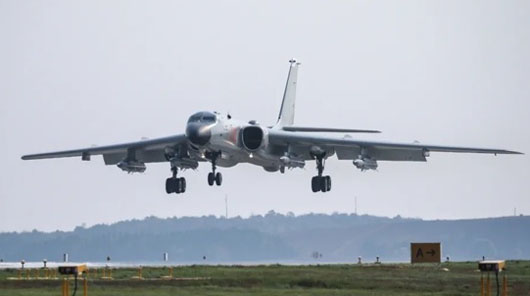FPI / February 3, 2021
By Richard Fisher
Days after the inauguration of President Joe Biden, on Jan. 23, China’s People’s Liberation Army Air Force sent eight Xian H-6 bombers into the region just south of Taiwan.

That same day the United States Navy aircraft carrier USS Roosevelt was steaming toward an adjacent region through the Luzon Strait between Taiwan and the Philippines.
But it was not until Jan. 29 that the Financial Times reporter would disclose that the H-6 bombers, most likely new H-6K versions, and some of their escorting Shenyang J-16 fighters were engaged in a simulated strike on the U.S. aircraft carrier.
Citing unnamed sources the article disclosed, “Pilots of H-6 bombers could be heard in cockpit conversations confirming orders for the simulated targeting and release of anti-ship missiles against the carrier.”
However, the U.S. IndoPacific Command has sought to downplay the danger, telling Reuters on Jan. 31, “The Theodore Roosevelt Carrier Strike Group closely monitored all People’s Liberation Army Navy and Air Force activity, and at no time did they pose a threat to US Navy ships, aircraft, or sailors.” They added that the bombers did not come within 250 miles (463km) of the carrier.
PLA Air Force H-6K, H-6N and PLA Naval Air Force H-6J bombers have been seen carrying up to four of the 400+km range and supersonic speed China Aerospace Science and Industry Corporation (CASIC) YJ-12 ramjet-powered anti-ship missiles.
Full Text . . . Current Edition . . . . Subscription Information
FPI, Free Press International
